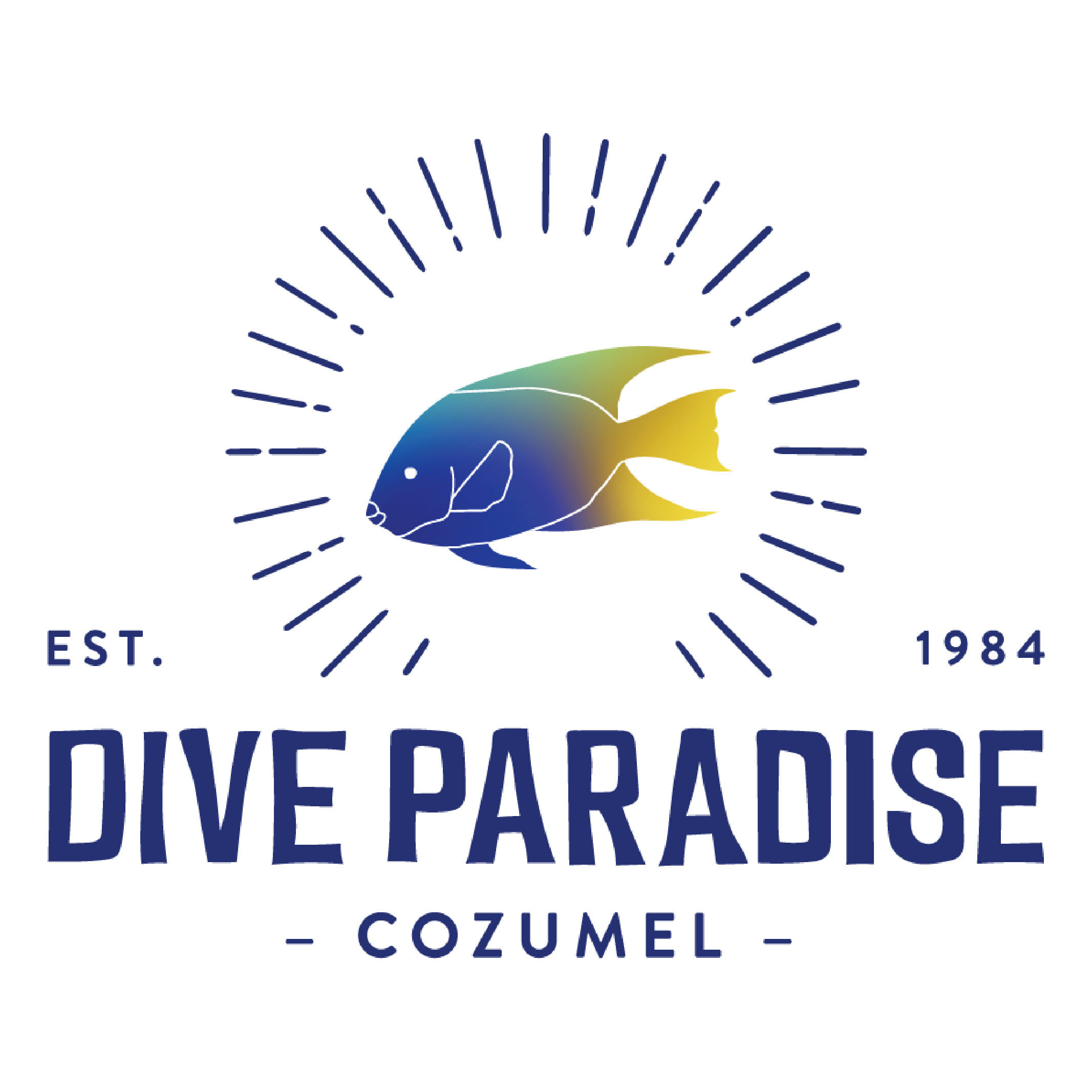Spectacular Island Reefs
“Please Do Your Part to Conserve These Beautiful, Natural Wonders —
Take Only Memories, Leave Only Bubbles”
Visit the Cozumel Marine Park’s Facebook page for up-to-date information on which dive site are currently open.
Come see why Jacques Cousteau declared Cozumel one of the most spectacular diving locations in the world! Majestic coral reefs, abundant marine life, and the crystal-clear waters truly make it a diver’s paradise, welcoming new divers into its warm, gentle drift diving, while wowing advanced divers with its wide variety of dive sites.
All of Cozumel’s reefs are considered excellent by Caribbean standards. The drift diving technique utilized on the reefs is the easiest type of diving by any standards. Most important to us all is that these reefs are protected by Mexican law and will be preserved forever. Bearing in mind that just one careless kick can destroy 20-40 years of coral growth, please watch your BUOYANCY CONTROL If you are new to the sport and have not yet mastered this important skill, try to stay at least 3 feet above the reef and be aware of what your fins are doing. Likewise, following correct diving procedures, your instrument consoles should be secured to your B.C. and not left dragging along the reef.
The Lively Shallow Reefs
Paradise Reef is actually a series of three separate reefs running parallel to shore approximately 200 yards out and is the only reef listed here accessible to beach divers. Maximum depth is 45 feet. All 3 sections are abundant with marine life of every size, color and description. Expect to see crab, lobster and a plethora of multicolored tropical fish Bring some food and be surrounded by angels. tangs and yellowtails. Watch your guide feed the spotted morays. Look closely under ledges and in holes and you’re likely to spy the reclusive “Splendid Toad Fish” reputed to live nowhere in the world other than Cozumel. Paradise reef is the island’s most popular night diving location. (Intermediate)
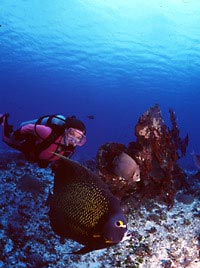 Chancanab Reef is just south of Parque Chancanab and about 350 yards offshore. Maximum depth is 55 ft. The coral formations and marine Life are similar to, but a little less populated than Paradise. Chancanab is another good location for night diving. (Novice)
Chancanab Reef is just south of Parque Chancanab and about 350 yards offshore. Maximum depth is 55 ft. The coral formations and marine Life are similar to, but a little less populated than Paradise. Chancanab is another good location for night diving. (Novice)
Paso El Cedral or “Oak Pass” is a series of many reefs marked with expansive low profile caverns at its beginning and plenty of big fish throughout. Maximum depth 60 ft.. Cedral is another seldom dived but spectacular site. (Intermediate)
Balones of Chancanab is a series of balloon shaped coral heads. Plenty of lobster, crab and color. Out from and slightly south of Chancanab. 60-70 ft. (Novice)
 Santa Maria Reef begins where San Francisco leaves off… at the south end of S.F. restaurant, a little less coral, larger schools of angels… beautiful diving also. (Intermediate)
Santa Maria Reef begins where San Francisco leaves off… at the south end of S.F. restaurant, a little less coral, larger schools of angels… beautiful diving also. (Intermediate)
San Francisco Reef – Beginning on the southern end of San Francisco Beach, this half mile reef is broken into 3 sections, each separated by about 60 yards of sand. This is Cozumel’s shallowest wall dive. Loaded with life and best dived between 35 and 50 ft. San Francisco is a particularly exciting shallow dive, and not to be missed. (Intermediate)
Yucab Reef maximum depth 60 ft.. Yucab’s dense low profile is a cornucopia of life and color. Barracuda are almost always seen here and the current is usually swift. (Novice)
Tormentos Reef is a series of colorful coral heads separated by “blue” sand valleys you can almost always visit with a very friendly and big moray. A divemaster’s favorite. 40-70 ft. (Intermediate)
Shallow Palancar – An outstanding dive between 20 and 40 ft. Great for beginners but small groups of experienced divers can enjoy an incredible tour of long, narrow tunnels and caves. (Novice)
Shallow Columbia – This never ending sea garden is still a favorite for maximum bottom time. 15-35 ft. If you want to dive deeper here, you’ll have to bring a shovel. (Novice)
The Spectacular Deep Dives
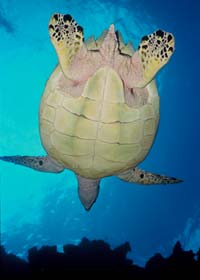 Maracaibo Reef – The most challenging dive spot in Cozumel at 140 -160 feet, which is decompression (non sport) diving. The reef features a spectacular multitude of caves and crevices, requiring an entire day to explore. There is also a series of very lush and rarely dived huge heads in 60-90 ft. of water. (Advanced)
Maracaibo Reef – The most challenging dive spot in Cozumel at 140 -160 feet, which is decompression (non sport) diving. The reef features a spectacular multitude of caves and crevices, requiring an entire day to explore. There is also a series of very lush and rarely dived huge heads in 60-90 ft. of water. (Advanced)
Chun Chakab – Probably the most difficult to find reef in Cozumel Diving this one takes very special combination of captain, divemaster and weather conditions, If you do manage to get there, expect a virgin submarine fantasyland where large pelagics are often seen. For experienced ONLY! 90-120 ft. (Advanced)
La Francesa Reef – An excellent deep site for first time ocean divers Not located on our famous drop-off, this reef is surrounded by sand bottom at 7~15 feet: Expect mild currents and a wide spectrum of colorful marine life. (Novice)
Palancar Reef – The reef most identified with Cozumel is actually a conglomeration of many different coral formations and personalities. Stretching over three and one half miles, this gargantuan queen reef lies about a mile oft shore and tops a sloping wall which descends to a maximum depth of over 3000 feet. Palancar offers such a wide variety of profiles that she could not be seen in 20 or even 30 dives. Just to get a glimpse” of this multifaceted giant, the diver need make at least 6 separate dives. (Novice)
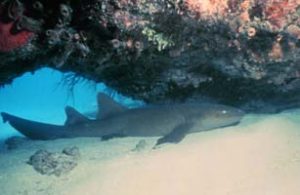 Palancar Gardens at the north end is relatively shallow and best dived between 40 and 70 ft. Often dived, nevertheless beautiful with many large caverns. (Novice)
Palancar Gardens at the north end is relatively shallow and best dived between 40 and 70 ft. Often dived, nevertheless beautiful with many large caverns. (Novice)
The Little Caves is the area of many winding canyons, deep ravines and narrow crevices. A labyrinth of passageways, tunnels and caves, this is best dived at 50-70 feet. (Novice)
The Big Horseshoe where a series of tightly packed giant coral heads from a natural horseshoe rising from 100 feet to within 20 feet of the surface. Former home of the Christ statue (which now stands in Chancanab Park), this is still Palancar’s busiest deep dive. Too much broken coral here, dive well, please. (Novice)
Broken Reef or The Little Horseshoe – just south of the big one is where you’ll find majestic coral ridges rising high from the slope – Many windows, canyons and caverns. Best at 60-80 ft. Seldom dived and pristine. (Novice)
Palancar Caves – still further south, is best dived al 60-90 feet to appreciate it’s deep buttresses, tunnels, caves and immense caverns.(Novice)
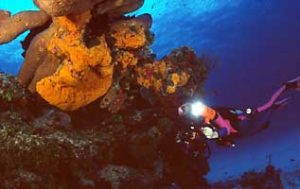 Deep Palancar – Is where the wall begins at 9O-100 feet. Rarely dived and pristine. Not for novice divers 100-120 ft. Spectacular visibility and currents vary all along the reef, but you can always count on stunning, exciting dive at mighty Palancar. (Advanced)
Deep Palancar – Is where the wall begins at 9O-100 feet. Rarely dived and pristine. Not for novice divers 100-120 ft. Spectacular visibility and currents vary all along the reef, but you can always count on stunning, exciting dive at mighty Palancar. (Advanced)
Santa Rosa Reef or “The Wall” – Undoubtedly Cozumel’s second most popular drop-off. A wall begins at 50 feet and drops straight away into the deep. There is usually a brisk current and what an incredible thrill it is to literally fly the face of the wall and occasionally frolic with a playful grouper. Santa Rosa offers great beds of tunicates, immense sponges, huge overhangs of stony corals and impressive caves and tunnels best dived 60-80 ft. Awesome! (Intermediate)
Cedral Wall – A fairly flat wall just brimming with life and color. Expect a swift ride — Look Ma! No kicking – 50-90 ft. (Intermediate)
 Columbia Reef – Another impressive drop-off at 60-80 feet. The quality of diving here is at least as spectacular as any part of Palancar. Deep diving at its finest. Columbia is comprised of a series of gigantic coral pinnacles (most over 90 ft. tall) rock marked with caves, tunnels and caverns. Here you’ll experience a unique sensation liken to floating around the Rocky Mountains. Small marine life is a bit sparse but large creatures are frequently seen. (Intermediate)
Columbia Reef – Another impressive drop-off at 60-80 feet. The quality of diving here is at least as spectacular as any part of Palancar. Deep diving at its finest. Columbia is comprised of a series of gigantic coral pinnacles (most over 90 ft. tall) rock marked with caves, tunnels and caverns. Here you’ll experience a unique sensation liken to floating around the Rocky Mountains. Small marine life is a bit sparse but large creatures are frequently seen. (Intermediate)
Punta Sur – incredible topography… huge caverns. Many divers surfaces screaming with joy. 90-100 ft. (Intermediate)
Punta Sur II – Home of “the devil’s throat”. This sequel is every bit as fascinating as the original. 90-120 ft.(Advanced)
 Barracuda and San Juan Reefs are younger, more virgin reefs. Barracuda’s Wall and the “Mountains” of San Juan offer little exciting topography. These are definitely not for the novice or overly confident divers. Currents of 3-10 knots run straight out to sea and if you lose your dive group, your next stop may be Cuba. These 2 reefs can be dived safely only by small groups of experienced current divers utilizing a hand held ascent line tied to float which the boat can keep sight of and follow. Depths range from 70 -110 ft. Cameras must be left topside. (Expert)
Barracuda and San Juan Reefs are younger, more virgin reefs. Barracuda’s Wall and the “Mountains” of San Juan offer little exciting topography. These are definitely not for the novice or overly confident divers. Currents of 3-10 knots run straight out to sea and if you lose your dive group, your next stop may be Cuba. These 2 reefs can be dived safely only by small groups of experienced current divers utilizing a hand held ascent line tied to float which the boat can keep sight of and follow. Depths range from 70 -110 ft. Cameras must be left topside. (Expert)
Villablanca Wall – Different! Instead of the huge stony coral buttresses, so typical of these southern deep reefs, the sloping wall here is dominated by huge sponges, gorgonians, and big schools of jacks and angelfish. It is recommended that novices make this one from a boat, but this site can be dived by more experienced divers from the beach. 50-100 ft. (Intermediate)
Virgin Wall – Due to heavy currents preventing local divemasters from bringing large groups of reef wreckers, this area remains pristine and lush. 2-4 different dives to see it all. If I had to choose my very favorite dive In Cozumel, it would be one of these. Which? Thank you, I won’t tell. 40-130 ft. (Advanced)
-Tom.
